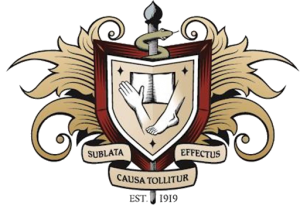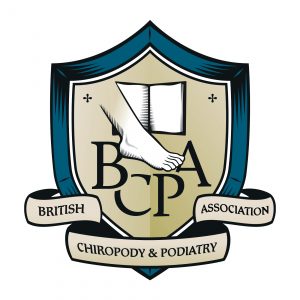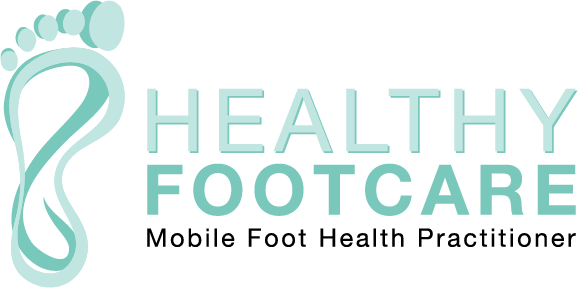Foot Conditions
Diabetic Foot Care
Diabetic patient’s fall into a ‘higher risk’ category in foot care due to the vulnerable nature of their condition. This is because damage to the nerves of the foot can mean small nicks and cuts aren’t noticed and this, in combination with poor circulation, can lead to an increased risk of diabetic foot pain and ulceration. Diabetes can also cause your feet to change shape overtime. This means your shoes may not fit as well and this can lead to ingrown toenails, hammer toe and bunions.
As a Foot Health Practitioner I undertake diabetic feet services and am fully trained to assess and give advice so that many common diabetic foot problems can be managed. It is important diabetic feet are regularly checked by a professional so early changes to a patients vascular or neurological status are detected and foot conditions treated.
Maintaining healthy foot care is critical for diabetics, never ignore minor foot problems. I will provide neuro vascular foot health assessments on a regular basis. For diabetics, looking after your feet is one of the most important aspects of your personal healthcare, whatever your age.
Athlete's Foot
Athlete’s foot is a common fungal infection of the skin that occurs in about one in five adults.
Moisture that develops between the toes can be a breeding ground for fungi and/ or bacteria. Giving a sensation of stinging or burning which can be itchy, red and scaly. Those suffering with athlete’s foot often complain of smelly feet.
Athlete’s foot is contagious and can spread to your toenails, foot soles and up the sides of your feet. After assessment, I can provide specialist ointments and advice for the treatment of athlete’s foot.
Fungal Nail Infections
Fungi spreading from athlete’s foot causes most fungal nail infections. Other fungi tend to attack nails that are already damaged, as it is easier for the fungus to invade. With fungal nail infections the toenail turns yellow, brittle and can thicken. They may cause pain and swelling in the skin around the nail with pieces beginning to break off or lift.
Fungal infections of the toenail are very common but can take 9 to 12 months to resolve. They rarely resolve unaided and need to be addressed in order to avoid them spreading to other nails and skin.
After assessment I can provide appropriate treatment which will be applied after the nail has been carefully cutback. Allowing ointment to be applied as effectively as possible and so reducing the risk of the the infection.
Corns and Calluses
A corn is a small, circular, hard particle of dead skin that builds up on the foot. Corns have a clearly defined centre that can be hard or soft and are usually present at points of pressure such as the tops of the toes or the bony areas of the foot.
Corns can be extremely painful and need to be removed by a professional. I will need to use a surgical scapel to carefully shave away the thickened dead skin and remove the corn. The procedure is painless because the skin is already dead.
A callus is a larger patch of thickened skin that forms as a result of friction usually on the balls of the feet or the heels. After assessment, callus can be removed by a debridement procedure using specialist instruments.
To prevent corns or calluses, it is essential to address what is causing them to arise in the first place, this is often pressure or friction caused by footwear.
Both conditions are easily treated by a Foot Health professional and relief is immediate making walking far more comfortable.
Verrucae
Verrucae are plantar warts that usually appearing on the soles of the foot where the contagious HPV virus has invaded the foot through cuts and abrasions. Sometimes they are painful and other times not.
The pain can come from a group of verrucae known as “mosaic” or a single verruca which presses into the foot. Sometimes verrucae have a crumbly edge and a tiny black dot in the centre, these are swollen blood vessels. Verrucae can come and go in children but tend to linger in adults.
I can help treat verrucae by removing dead skin to incite an immune response, this is usually essential for verrucae removal. I will apply a more effective ointment than can be bought over the pharmacy counter and provide follow up advice for preventative action.
Ingrown Toenails
Ingrown toenails occur due to badly cut nails. It occurs when a spike or separated edge of the toenail pierces the outer layer of skin of the toe. They can be very painful and should be treated as soon as symptoms of pain, redness or swelling appears.
In mild cases by removing a small part the nail will be enough to alleviate the symptom. If you have puss, increasing pain and swelling then infection may be present, and a larger/deeper nail resection may be required by a podiatrist.
Nail Reduction and Nail Cutting
I can provide routine cutting of toenails for those that need assistance including the elderly, visually impaired, disabled or people who are simply unable to reach their feet safely.
Many older people have toenails that have grown thicker with age. Others may have developed a fungal infection or had a trauma at some time.Thickened nails are not normally harmful however they can be embarrassing and uncomfortable.
I can reduce the nail thickness using sterilised instruments. This will ease the difficulty to trim the nails and ensure pressure within your footwear is reduced. Nail reduction is a common service for many diabetics.
Hard Skin/Cracked Heels
This condition first develops due to dry skin which begins as scaly skin on the bottom of the foot. Deep, painful cracks can form on the bottom of the heel often due to the repetitive friction from walking barefoot or with an open backed shoes.
Left untreated, cracked dry heels can make it painful to walk sometimes leading to serious medical problems especially for diabetic patients.
After reducing the hard skin using specialist instruments, I will then moisturise the skin with a medical skin nourishing heal balm. This will help treat your feet back to health and keep infection at bay.




